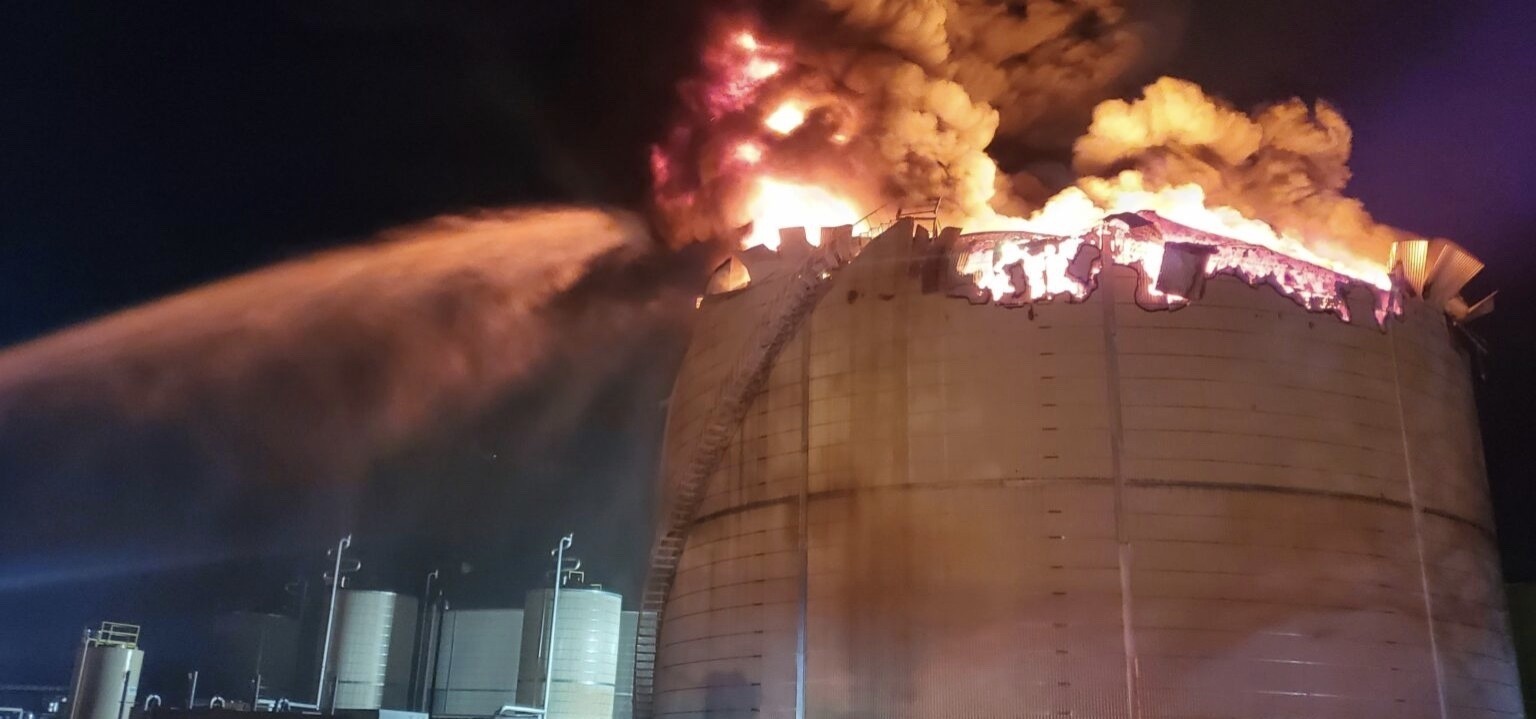SAFETY
The CEI Hub
What could happen here?
We’re just an earthquake or other event away from total devastation.
Our number one concern is the threat we face living and working in or near Linnton where the vast majority of Oregon’s fuel also resides. Tank the Tanks wants Oregonians to be aware of the very real dangers that we and all life along the Willamette River are facing.
Earthquakes aren’t the only danger with storing 300 million gallons of fuel on highly unstable soil near neighborhoods, railroad lines, a major highway, a fault line, and the Willamette River. In addition to natural disasters like floods or lightning strikes, fuel tank catastrophes occur worldwide due to human error and equipment failure.

9 of 10 tanks in use were built between 1923 and 1993 when there were no building safety standards.
…Any spill or explosion at the CEI Hub would be a serious threat to workers, firefighters and other first responders, frontline communities, fish and other natural resources. It has been characterized as a disaster on the order of Fukushima and Deepwater Horizon combined. We cannot afford to ignore this problem any longer.
Michael Dembrow, State Senator

Inside Climate News
The Cascadia Earthquake will bring more than 4 minutes of shaking to this area.
These huge earthquakes happen every 243 years on average. The last was in 1700 – 323 years ago.

The earthquake is overdue.
Tank failure at the Hub would be currently an unmitigated disaster... a looming catastrophe that would result in devastating loss of life and the rippling devastation that would unfold in the months and years and even decades to come . . what would start as potential rupture or collapse and fuel spillage would almost certainly rapidly ignite into a toxic fireball and flame front that would eviscerate anything and everyone in its path.
Dacia Grayber, State Representative, Metro area firefighter

"CEI Hub Seismic Risk Analysis" by Multnomah County and Portland Bureau of Emergency Management
Many HAZMAT facilities are located in or near the CEI Hub
Seismic shaking will release HAZMATs from facilities throughout Multnomah County. "Gaseous chemicals that create toxic vapor clouds or plumes pose the highest risk to life safety..." Thousands could die from toxic inhalation, with tens of thousands injured. Plumes will challenge evacuation and shelter in place for residents needing to protect themselves.

Toxic cloud release
The Lower Willamette and Columbia could be destroyed for generations.
A release of just a small portion of the liquid fuels at the CEI Hub would cause a spill of national significance larger than any previous oil spill in US history. Hazardous materials would release into the air and soil… into the Willamette and Columbia Rivers, which flow into the Pacific Ocean. The environmental devastation would cover a huge area of waterway.

Kelley Point Park
Liquefaction: Soil changes to a thick liquid during an earthquake.

Liquefaction Canterbury Maps

The two images above are from the 2011 New Zealand earthquake.
If tanks ignite, fires will likely spread to Forest Park and across the river to North Portland and Sauvie Island.
Because of our rivers' tides, life-killing toxics will travel upstream as well as downstream.

Cathedral Park Jazz Festival, courtesy of St Johns Boosters
Bridges and roads will collapse.
After a major incident, there will be no fuel for firefighters, rescue workers, or hospitals.
There will be limited aviation fuel for planes to come and go.

PREDICTED INJURIES & DEATHS IN MULTNOMAH COUNTY
9.0 Cascadia earthquake:
- Daytime quake: 11,400-16,700 people injured and killed
- Nighttime quake: 2,800-5,600 people injured and killed
6.8 Portland Hills Fault quake:
- Daytime quake: 28,900-36.300 people injured and killed
- Nighttime quake: 9,300 -15,300 people injured and killed
HAZMAT releases:
- Summertime release from 4 facilities at/near the Hub: 2763 deaths, 17,766 injuries
- Wintertime release from 4 facilities at/near the Hub: 1257 deaths, 19,652 injuries
PREDICTED CONSEQUENCES
- Habitat and natural resource damages, some decades-long or permanent, largely paid for by taxpayers
- Destruction of real or personal property
- Loss of subsistence use including tribal, navigation, fisheries
- Clean up costs largely paid by taxpayers
- Fuel prices born by consumers
- Human health costs
It does NOT have to be like this.
This unsafe situation is fixable.
Go to ACT to learn what you can do.